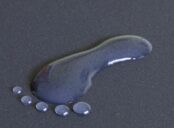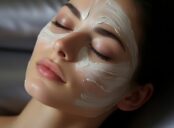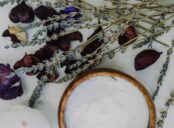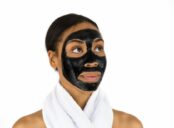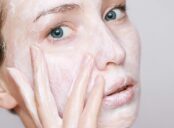Tanning Lotion: A Comprehensive Guide to the Perfect Sun-kissed Glow

Introduction:
Tanning lotion has become an essential product for those seeking a beautifully bronzed complexion. In this article, we will delve into the world of tanning lotions, providing valuable information for individuals interested in achieving that sun-kissed glow. We will explore the historical evolution of tanning lotions, discuss essential factors to consider, and guide you through the steps to obtain a flawless tan.
I. Understanding Tanning Lotion: A Key to Achieving a Radiant Glow
Tanning lotion is a skincare product specifically designed to enhance and accelerate the tanning process. It comes in various formulations, including lotions, oils, gels, and sprays, catering to different preferences. These products contain active ingredients that work by stimulating melanin production in the skin. Melanin is the pigment responsible for the skin’s color, and an increased melanin production leads to a darker complexion.
1. Choosing the Right Tanning Lotion:

– Consider your skin type: Different tanning lotions cater to specific skin types, whether you have fair, oily, sensitive, or dry skin. Look for products that offer moisturizing properties and SPF protection if you have dry or sensitive skin. Oil-free or non-comedogenic options are ideal for individuals with oily or acne-prone skin.
– Opt for a suitable formulation: Tanning lotions come in various textures and consistencies. Lotions are generally easy to apply and provide hydration to the skin. Gels and sprays are convenient for quick and even coverage. Oils offer a natural, sun-kissed sheen but may require more frequent reapplication.
– Consider additional benefits: Some tanning lotions contain nourishing ingredients such as vitamins, antioxidants, and botanical extracts, providing added skincare benefits while tanning. Look for products with moisturizing, anti-aging, or skin-repairing properties to optimize your tan and overall skin health.
II. The Evolution of Tanning Lotions: From Sunbathing to Revolutionary Formulations
(Include bulleted points here for better chances of appearing as a featured snippet)
– Ancient Egypt and Greece: Historical records indicate that ancient civilizations valued tan skin as a symbol of beauty and prosperity. Cleopatra, renowned for her beauty, used sour milk as a natural tanning lotion due to its lactic acid content.
– Early 20th century: Sunbathing gained popularity, and people started using oils and homemade mixtures containing baby oil, iodine, and vinegar. However, this practice came with long-term health risks due to excessive sun exposure and lack of UV protection.
– 1920s-1930s: Coco Chanel inadvertently popularized the trend of bronzed skin when she returned from a Mediterranean vacation with a tan. Sunbathing became fashionable, encouraging the development of commercial tanning oils with SPF protection.
– 1960s-1970s: The adverse effects of excessive sun exposure on skin health were widely acknowledged. This shift led to the emergence of sunless tanning lotions containing dihydroxyacetone (DHA), a colorless sugar that reacts with dead skin cells, creating a temporary tanning effect.
– 1990s-present: Advancements in cosmetic science and technology have revolutionized the tanning industry. The introduction of gradual tanning lotions, spray tans, and self-tanning mousses has provided individuals with safer and more convenient alternatives to achieve a tan, regardless of the weather or season.
III. Achieving the Perfect Tan: A Step-by-Step Guide
– Exfoliate: Prior to applying tanning lotion, it is essential to exfoliate your skin. This process removes dead skin cells, ensuring an even tan and prolonging its longevity. Use a gentle scrub or exfoliating mitt to slough off any rough patches.
– Moisturize: After exfoliation, apply a light moisturizer to any dry areas of your skin, such as elbows, knees, and ankles. Hydrated skin is essential to prevent the tanning lotion from clinging to these areas and creating uneven patches.
– Apply tanning lotion: Start by applying the tanning lotion to a small portion of your body, such as your arm or leg, to test for any potential adverse reactions. Once confirmed, apply the lotion evenly over your entire body, using circular motions to ensure thorough coverage.
– Blend carefully: Pay close attention to areas with creases, such as elbows, knees, and ankles. Use a separate, smaller brush or sponge to blend the lotion into these areas, preventing any buildup or streaks.
– Allow drying time: Depending on the formulation, tanning lotions require different drying times. Follow the product instructions and avoid contact with water or tight clothing until fully dry.
– Maintain your tan: To prolong the longevity of your tan, moisturize regularly, avoid excessive exfoliation, and reapply tanning lotion as needed. Gradual tanning lotions are perfect for maintaining a subtle glow without an intense color change.
In conclusion, tanning lotion offers a safe and convenient way to achieve a sun-kissed complexion without the adverse effects of excessive sun exposure. With a multitude of options available, it is crucial to choose the right tanning lotion for your skin type and preferences. By following our step-by-step guide, you can confidently embark on your journey towards a flawless and radiant tan. Remember to prioritize skincare and overall skin health throughout the tanning process for optimal results.


